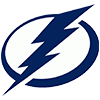Whether you're in head-to-head or rotisserie leagues, roster balance is everything. Even as NBA starting lineups evolve into more positionless schemes, fantasy basketball still assigns players by position.
Owners preparing for their NBA fantasy draft need to account for positional value while also spotting category edges. Finding players who give you bonus production in categories uncommon for their position is often what separates winning teams.
Drafting Guards: Dominate Assists, Scoring & Free Throws
Guards are the engines of your team. They provide the most assists and drive free throw percentage, while also carrying strong scoring upside. In fact, 17 of last season's top 20 assist leaders were guards (Nikola Jokic, LeBron James and Giannis Antetokounmpo were the others), as were 15 of the top 20 free-throw shooters. Thanks to Steph Curry's revolutionary style of play, guards also dominate the three-point category, with 18 of the top 20 leaders being guard-eligible. Lauri Markkanen and Jayson Tatum were the outliers.
A star guard should be high on your NBA fantasy draft cheat sheet — they give you immediate advantages in assists, threes, scoring and free-throw percentage.
Some guards, like Josh Giddey with rebounds (8.1 per game prediction via NBA projections) or Dyson Daniels with steals (2.7), even add value in rare categories that are otherwise tough to find. They might fluctuate year-over-year but can be a huge benefit later in drafts.
Drafting Forwards: Unlock Versatility Across Categories
Modern forwards are hybrids, combining guard-like skills with size. That means they can fill holes in your roster. Elite options like Antetokounmpo, James and Jalen Williams deliver across multiple categories, while role-specific forwards can balance weaknesses.
When building your fantasy basketball rankings, think fit: if you drafted Curry, a big, rebound-heavy forward like Anthony Davis may help more than another scorer like Tatum. Later in drafts, target whether you need guard-style wings or power forwards who anchor boards and blocks.
Drafting Centers: Leverage Efficiency, Rebounds & Bonus Skills
Centers have evolved from traditional rim protectors to all-around contributors. Many now pass and shoot threes — something nearly unheard of a decade ago. Last season, seven centers averaged two three-pointers per game, while six ranked among the top 50 in assists.
In 2011, for example, Boris Diaw led all centers with 4.1 assists per game — the only center-eligible player in the top 50. That same year, Diaw led all bigs by averaging one made 3-pointer per game. In 2024-25, seven center-eligible players averaged two triples per game. The position is becoming a fantasy force, and you'll see plenty of high NBA fantasy ADP numbers around them.
Centers will always dominate rebounds, blocks and field-goal percentage. But this new breed adds extra categories to help balance rosters. That said, durability is a concern — centers appear frequently on the NBA injury report, so weigh a player's health history as a draft factor.
Build a Balanced Roster with RotoWire's Draft Kit
Whether you're in a snake draft or calculating fantasy basketball auction values, knowing positional impact is critical. RotoWire's Draft Kit provides NBA projections, insights on scarcity and positional breakdowns so you can spot value others miss.
Understanding your league's structure — like utility spots, required centers and bench depth — is equally important. By combining these settings with expert projections (all available with your fantasy basketball draft kit), you'll enter your draft with a clear strategy.
Positions may be evolving in the NBA, but the edge goes to owners who adapt fastest. Those who subscribe to RotoWire get access to deeper insights, tools and cheat sheets designed to turn draft prep into league-winning execution.






















